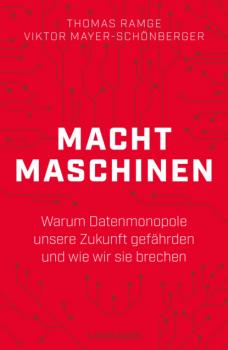Изобразительное искусство, фотография
Различные книги в жанре Изобразительное искусство, фотографияRegistro de La Habitada
El Jurado otorgó el premio debido a que encuentra en esta obra las siguientes cualidades: «Existe un trabajo cuidadoso y novedoso con las imágenes poéticas, en la exploración del tema del cuerpo. Los poemas, a través de un lenguaje radical, revitalizan las posibilidades de representación de la memoria corporal. La intertextualidad ocurre de forma orgánica, abriendo las posibilidades significativas del poema. Asimismo, la „interdiscursividad“ con el cine brinda al lector claves para determinar el registro en el que se inscribe el poemario, reforzando una propuesta estética que pone en diálogo a la poesía con otros lenguajes».
Das muss gesagt werden
Stilistisch brillant und treffsicher, in der Haltung unbestechlich: Elfriede Hammerl, die seit 35 Jahren mit wachsamem Blick das Tagesgeschehen begleitet, darf man mit Fug und Recht als Doyenne der politischen Kolumne bezeichnen. In ihren scharfsinnigen Texten spürt sie Ungerechtigkeiten nach, stellt sich auf die Seite der Benachteiligten und begegnet den Mächtigen aller Couleur mit gebotenem Misstrauen.Ob Familienpolitik, Migrationsfragen, Verteilungsgerechtigkeit, Intoleranz oder das Altern – Elfriede Hammerl spannt thematisch große Bögen, stets flankiert von einem ihrer wiederkehrenden Anliegen: den unterschiedlichsten Lebenssituationen von Frauen Gehör zu verschaffen. So wird in ihren Kolumnen das Politische privat und das Private politisch; sie spiegeln gesellschaftliche Veränderungen, soziale Sackgassen und schwer aufzubrechende Haltungen wider. Eine Sammlung an herausragenden Texten, die kritisch und kämpferisch die Grundstimmung einer Dekade einfangen.
Pedestales y prontuarios
Una severa estatua en una plaza, el piadoso vitral de una iglesia, la simpática efeméride en la portada de una revista infantil representan objetos portadores de significado social, diseñados para transmitir una determinada impronta donde el pasado se temporaliza en un presente épico, perpetuo e inamovible. Desde lo alto del pedestal, el héroe nos asegura que las cosas sucedieron así y no de otra manera, aunque el proceso recordatorio puesto en escena tergiverse el hecho que representa.El patrimonio conmemorativo tiene como misión didáctica naturalizar un relato convincente e imponer una determinada visión política para glorificar a las elites dominantes, que diseminan estereotipos adecuados a sus intereses, mientras ocultan los prontuarios correspondientes de ciertos personajes encumbrados en pedestales de mármol de Carrara. El arte conmemorativo puede tener mil calificaciones, la única que no le cabe es la de inocencia.El autor desenmascara, con su agudo análisis y en un estilo ameno, esta sutil operación simbólica que falsea la realidad mediante un discurso verosímil que nos condena a ser pensados con categorías mentales opresoras. En la periferia del mundo, la dependencia no solo es económica. Si después de la lectura de este libro, la observación de una estatua nos provoca cierta inquietud, su objetivo estará cumplido.
Machtmaschinen
Digitalen Superstarfirmen ist es in den vergangenen zwanzig Jahren gelungen, die meisten und relevantesten Daten auf ihren Servern zu zentralisieren. Diese Datenmonopole mögen zwar gut für die Aktionäre von Facebook, Amazon und Google sein, aber sie sind schlecht für den Fortschritt. Denn damit wir Alzheimer besiegen, die Bahn pünktlich machen und Armut erfolgreich bekämpfen können, müssen alle Zugriff auf Daten haben – vom Wissenschaftler über den innovativen Mittelständler bis zum Sozialarbeiter. Es wird also Zeit, die datenreichen Superstarfirmen zu verpflichten, ihre Datenschätze mit anderen zu teilen – und Datenschutz neu zu denken. Thomas Ramge und Viktor Mayer-Schönberger fordern eine Abkehr vom Datenschutz deutscher Prägung und machen sich stark für eine Datennutz-Grundverordnung, die für unseren Wohlstand so notwendig wie die Datenschutz-Grundverordnung für unsere bürgerlichen Rechte ist.
"Machtmaschinen" ist ein ökonomisch kluges, technisch kompetentes und politisch streitbares Buch für eine neue Kultur des Daten-Teilens.
Economists4Future
Hunderttausende Schülerinnen und Schüler beharren auf eine konsequente Klimapolitik. Eltern, Lehrer*innen, Unternehmer*innen und viele weitere Menschen solidarisieren sich mit ihnen, darunter über 26.000 scientists4future aus diversen Disziplinen. Nur die etablierten Wirtschaftswissenschaften schweigen. Das ist kein Zufall, denn ihr Denkstil hat wesentlich zu den Krisen der Gegenwart beigetragen: Denn eins haben Klimakrise, Finanz- und Wirtschaftskrise ebenso wie die Corona-Pandemie gemein: Sie entlarven die Fragilität unserer Wirtschaft und zeigen, wie abhängig wir uns als Gesellschaft von ihr gemacht haben. Alte, scheinbar bewährte Lösungen greifen nicht mehr, Lieferengpässe reißen ganze Zweige in den Abgrund, das gesellschaftliche Zusammenleben gerät aus den Fugen. Zeit für die Wirtschaftswissenschaften, die Gebetsmühle aus Effizienz und Eigennutz zu zerschlagen und neue Visionen für eine bessere Welt aufzuzeigen. In «economists4future» mischt sich eine Gruppe von Weiterdenker*innen in die jetzt notwendige Umgestaltung von Wirtschaft und Gesellschaft ein – und verändert damit selbstverständlich geglaubte Spielregeln einer wichtigen Wissenschaft.
Amazonas
Im Sommer 2019 gingen dramatische Bilder von den Bränden am Amazonas um die Welt. Sie machten sinnfällig, dass die wirtschaftliche Ausbeutung des größten zusammenhängenden Regenwaldgebietes der Erde ein historisch ungekanntes Ausmaß erreicht hat. Seit in Brasilien die rechtspopulistische Regierung von Jair Bolsonaro im Amt ist, haben sich die Zerstörungen nochmals beschleunigt, Umweltaktivisten müssen um ihr Leben fürchten, Indigene sind in ihrem Lebensraum bedroht. Martin Specht bereist die Region seit Jahren und berichtet eindrücklich von den Menschen vor Ort, den geopolitischen Konflikten und der Ausplünderung des Regenwaldes, aber auch von den vielfältigen Anstrengungen, Amazonien zu retten. Sollte dies nicht gelingen, wären die Folgen für das globale Klima katastrophal.
The Filipino Primitive
How museums’ visual culture contributes to knowledge accumulation Sarita See argues that collections of stolen artifacts form the foundation of American knowledge production. Nowhere can we appreciate more easily the triple forces of knowledge accumulation—capitalist, colonial, and racial—than in the imperial museum, where the objects of accumulation remain materially, visibly preserved. The Filipino Primitive takes Karl Marx’s concept of “primitive accumulation,” usually conceived of as an economic process for the acquisition of land and the extraction of labor, and argues that we also must understand it as a project of knowledge accumulation. Taking us through the Philippine collections at the University of Michigan Natural History Museum and the Frank Murphy Memorial Museum, also in Michigan, See reveals these exhibits as both allegory and real case of the primitive accumulation that subtends imperial American knowledge, just as the extraction of Filipino labor contributes to American capitalist colonialism. With this understanding of the Filipino foundations of the American drive toward power and knowledge, we can appreciate the value of Filipino American cultural producers like Carlos Bulosan, Stephanie Syjuco, and Ma-Yi Theater Company who have created incisive parodies of this accumulative epistemology, even as they articulate powerful alternative, anti-accumulative social ecologies.
Make Art Not War
An extraordinarily visceral collection of posters that represent the progressive protest movements of the twentieth Century. Two of the most recognizable images of twentieth-century art are Pablo Picasso’s “Guernica” and the rather modest mass-produced poster by an unassuming illustrator, Lorraine Schneider “War is Not Healthy for Children and Other Living Things.” From Picasso’s masterpiece to a humble piece of poster art, artists have used their talents to express dissent and to protest against injustice and immorality. As the face of many political movements, posters are essential for fueling recruitment, spreading propaganda, and sustaining morale. Disseminated by governments, political parties, labor unions and other organizations, political posters transcend time and span the entire spectrum of political affiliations and philosophies. Drawing on the celebrated collection in the Tamiment Library’s Poster and Broadside Collection at New York University, Ralph Young has compiled an extraordinarily visceral collection of posters that represent the progressive protest movements of the twentieth Century: labor, civil rights, the Vietnam War, LGBT rights, feminism and other minority rights. Make Art Not War can be enjoyed on aesthetic grounds alone, and also offers fascinating and revealing insights into twentieth century cultural, social and political history.
Modern Theories of Art 1
This is an analytical survey of the thought about painting and sculpture as it unfolded from the early eighteenth to the mid-nineteenth centuries. This was the period during which theories of the visual arts, particularly of painting and sculpture, underwent a radical transformation, as a result of which the intellectual foundations of our modern views on the arts were formed. Because this transformation can only be understood when seen in a broad context of cultural, aesthetic, and philosophical developments of the period, Moshe Barasch surveys the opinions of the artists, and also treats in some detail the doctrines of philosophers, poets, and critics. Barasch thus traces for the reader the entire development of modernism in art and art theory.
Icon
Over the centuries, European debate about the nature and status of images of God and sacred figures has often upset the established order and shaken societies to their core. Out of this debate, an identifiable doctrine has emerged of the image in general and of the divine image in particular. This fascinating work concentrates on these historical arguments, from the period of Late Antiquity up to the great and classic defenses of images by St. John of Damascus and Theodore of Studion. Icon extends beyond the immediate concerns of religion, philosophy, aesthetics, history, and art, to engage them all.









